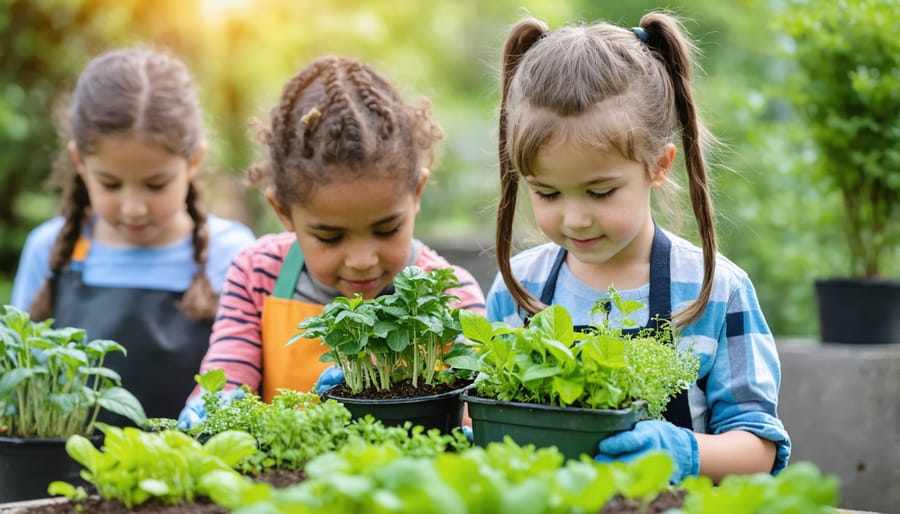In the heart of our bustling cities lies a hidden potential – the power to transform barren rooftops and vacant lots into thriving urban forests and productive agricultural landscapes. This is the essence of urban agroforestry, a groundbreaking approach that seamlessly integrates trees and crops into the urban fabric. By harnessing the untapped potential of our cities, we can cultivate a greener future, one where fresh produce, shade, and community pride grow side by side.
As Canadians, we have a unique opportunity to lead the charge in this transformative movement. From the coastal cities of British Columbia to the prairie metropolises of Alberta, urban agroforestry holds the key to building resilient, sustainable communities. It’s time to reimagine our urban spaces, to see beyond the concrete and envision a future where nature and city life harmoniously intertwine.
Join us as we explore the incredible potential of urban agroforestry and discover how, together, we can sow the seeds of change. Get ready to be inspired, empowered, and motivated to take action in your own backyard. The urban agroforestry revolution starts here, and it starts with you.
The Roots of Urban Agroforestry

Traditional Agroforestry Meets the City
Traditional agroforestry practices, such as alley cropping, silvopasture, and forest farming, are being adapted to urban environments in innovative ways. Urban agroforesters strategically integrate trees with crops and livestock in city spaces, optimizing land use and enhancing ecosystem services. For example, community gardens in Edmonton, Alberta, are incorporating fruit and nut trees alongside vegetable plots, providing shade, windbreaks, and diverse harvests. In Calgary, a network of urban food forests is being established, mimicking natural forest ecosystems while producing food for local communities. These urban agroforestry initiatives not only increase food security and green space but also foster a sense of community and connection to nature. By adapting traditional practices to city life, urban agroforestry demonstrates the resilience and adaptability of this ancient land management approach, offering a sustainable model for the future of urban agriculture in Canada and beyond.
The Ecosystem Services of Urban Trees
Urban trees play a crucial role in providing ecosystem services within urban agroforestry systems. By incorporating trees into urban agriculture, we can improve air quality by filtering pollutants and capturing carbon dioxide. Trees also support biodiversity by providing habitats for birds, insects, and other wildlife, enhancing the overall health of the urban ecosystem. Additionally, trees help regulate the microclimate by providing shade, reducing wind speeds, and moderating temperatures. This creates a more favorable environment for crop growth and human comfort. The strategic placement of trees can also reduce energy costs for nearby buildings by providing natural cooling in the summer and wind protection in the winter. By harnessing these ecological benefits, urban agroforestry contributes to creating more sustainable and resilient cities across Canada, including in Alberta where innovative projects are taking root.
Urban Agroforestry in Action: Canadian Success Stories
Calgary’s Edible Tree Project
Calgary’s Edible Tree Project is a shining example of successful urban agroforestry in action. Launched in 2016, this initiative has transformed underutilized urban spaces into thriving orchards and food forests. By partnering with community organizations, schools, and local residents, the project has planted over 1,000 fruit trees and shrubs across the city. These edible landscapes not only provide fresh, locally-grown produce but also foster a sense of community and connection to nature.
One of the project’s flagship sites is the Hillhurst Sunnyside Community Orchard, a once-vacant lot now home to over 50 fruit trees and berry bushes. Volunteers of all ages come together to plant, tend, and harvest the bounty, with a portion of the produce donated to local food banks. The orchard also serves as an outdoor classroom, hosting workshops on pruning, grafting, and organic pest management.
The Edible Tree Project demonstrates the power of urban agroforestry to create resilient, sustainable food systems while strengthening community bonds. As the project continues to expand, it inspires other Canadian cities to embrace the potential of edible landscapes and showcases the vital role urban agriculture can play in building a greener, more vibrant future.

Edmonton’s Green Rooftop Gardens
In the heart of Edmonton, a pioneering urban agroforestry project is taking root on the city’s rooftops. The Edmonton Green Rooftop Gardens initiative is transforming underutilized rooftop spaces into thriving food production hubs and lush urban oases. By combining traditional gardening techniques with innovative agroforestry principles, these rooftop gardens showcase the potential for sustainable food production in urban environments.
The project collaborates with local businesses, community organizations, and volunteers to establish and maintain the rooftop gardens. Diverse crops, including vegetables, herbs, and fruit-bearing trees, are strategically planted to optimize space and promote biodiversity. The gardens not only provide fresh, locally grown produce for the community but also offer educational opportunities for individuals to learn about sustainable agriculture practices.
Edmonton’s Green Rooftop Gardens demonstrate the numerous benefits of urban agroforestry. By greening the city’s rooftops, the project helps reduce the urban heat island effect, improve air quality, and create habitats for pollinators and wildlife. The gardens also serve as valuable green spaces for residents to enjoy, fostering a sense of community and connection to nature in the heart of the city.
As the project continues to expand, it inspires other cities across Canada to explore the potential of urban agroforestry and rooftop gardening. Edmonton’s innovative approach showcases how urban spaces can be transformed into productive and sustainable food systems, contributing to a greener and more resilient future.
Cultivating Community: The Social Benefits of Urban Agroforestry
Engaging Citizens in Urban Agriculture
Urban agroforestry projects foster a sense of community ownership and pride by engaging local residents in the planning, implementation, and maintenance of these green spaces. Volunteer opportunities, such as planting days, workshops, and harvest events, bring people together to learn about sustainable food production and connect with their neighbors. For example, the Calgary Rotary Clubs’ Urban Forestry Initiative has mobilized hundreds of volunteers to plant trees and create edible landscapes in underserved neighborhoods. These participatory projects not only enhance the physical environment but also strengthen social bonds and create a shared sense of purpose. By involving citizens in the care and stewardship of urban agroforests, these initiatives cultivate a deeper appreciation for nature and foster a culture of sustainability within the community. As more people experience the benefits of urban agroforestry firsthand, they become advocates for expanding these practices throughout their cities and beyond.

Nurturing the Next Generation of Urban Farmers
Urban agroforestry provides invaluable educational opportunities for children and youth to learn about sustainable food systems. By engaging with urban farms and food forests, the next generation can gain hands-on experience in growing, harvesting, and preparing fresh, locally-grown produce. These initiatives often partner with schools and community organizations to offer workshops, field trips, and summer camps that teach essential skills and foster a connection to the land. Through these experiences, young people develop an appreciation for the hard work and dedication required to produce food sustainably, as well as an understanding of the importance of preserving agricultural land and supporting local farmers. By nurturing the next generation of urban farmers, we can ensure a future with resilient, community-driven food systems that prioritize environmental stewardship and social well-being.
Overcoming Challenges and Looking Ahead
Navigating Urban Policies and Regulations
Urban agroforestry projects in Canada may face legal and policy hurdles related to land use, zoning regulations, and public health concerns. Navigating these challenges requires collaboration between project leaders, local authorities, and the community. Engaging with municipal governments early on can help identify potential obstacles and find solutions. Seeking guidance from experienced urban agroforestry practitioners and legal experts can also provide valuable insights. By working together to create clear guidelines and policies that support urban agroforestry, we can build a more sustainable and resilient food system for our cities. With the right approach, urban agroforestry can thrive within the framework of existing regulations while contributing to the health and well-being of our communities.
The Future is Green: Scaling Up Urban Agroforestry
Urban agroforestry has the potential to revolutionize Canadian cities, creating vibrant, sustainable communities that seamlessly integrate nature and agriculture. By incorporating fruit and nut trees, berry bushes, and other perennial crops into urban landscapes, we can create edible green spaces that provide fresh, locally-grown food while enhancing biodiversity and mitigating the effects of climate change. Imagine walking through your neighborhood and plucking a ripe apple from a nearby tree or harvesting fresh herbs from a community garden. As urban agroforestry projects scale up across the country, they can foster a sense of community, improve food security, and create new economic opportunities. With the right support and policies in place, Canadian cities can become models of sustainability, showcasing the power of urban agroforestry to create resilient, thriving communities. The future is green, and it starts with embracing the incredible potential of urban agroforestry in our cities.
Conclusion
Urban agroforestry holds immense potential for transforming our cities into sustainable, resilient, and productive ecosystems. By integrating trees and agriculture into urban landscapes, we can reap numerous environmental, social, and economic benefits. In Alberta and across Canada, pioneering projects have demonstrated the viability and impact of urban agroforestry, from community orchards to rooftop gardens. These initiatives not only provide fresh, locally-grown produce but also foster a sense of community, educate citizens about sustainable food systems, and create green spaces that enhance biodiversity and mitigate climate change.
To fully realize the potential of urban agroforestry, it is crucial that we support and expand these initiatives. This requires collaboration among governments, organizations, and individuals passionate about building sustainable cities. By investing in research, infrastructure, and education, we can overcome challenges and create thriving urban agroforestry networks. As citizens, we all have a role to play in this transformative movement. Whether it’s volunteering at a local community garden, supporting urban agriculture policies, or simply growing food in our own backyards, every action contributes to a greener, more resilient future. Together, let us embrace the power of urban agroforestry and cultivate a legacy of sustainable, vibrant cities for generations to come.











